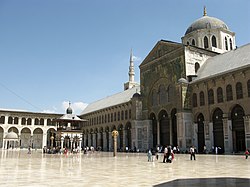Damascus is home to many Mosques, each drawing from various periods of its history such as the Umayyad Caliphate (of which Damascus was the seat), Abbasid Caliphate, Fatimids, Ayyubids, Mamluks, Ottoman Empire and finally the modern Syrian Arab Republic.
Contents


